The Carregado Thermal Power Station is being dismantled and will be demolished. It is the memories of those who worked there, that now occupy a space in the process of deactivation.
The "Phantom Power Plant"
The clock is set at 9:05 a.m. forever, but the time here has not stopped - the marks of its passage are very visible. The many colours of the Carregado Thermal Power Station have all turned into a rusty orange and a dusty gray, which covers the floor, the stairs and the silent machinery. The dust is enough for us to scratch our throats a little when we cross the large iron gates and walk inside. It smells of metal and rust.
The light that enters through the glass skylight allows us to distinguish siz huge turbo generators groups - the machines where electricity was produced between 1968 and 2012 - arranged along the huge nave of the Power Plant, which now looks more like a gigantic warehouse. In addition to the occasional fluttering of the pigeons that took over the place, the only sound we hear is the rhythmic and constant "zum zum" of the nearby REN sub-station.
Xavier Teixeira walks through the large nave with pride and nostalgia. He worked at Carregado from the age of 22 years old, he learned his trade "with the best professionals in the world", he recounts.
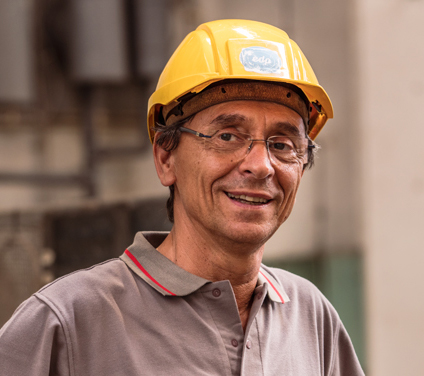
"I joined Carregado in 1983 as a mechanical locksmith. I was a boy full of desire and hope, who wanted to know what this great "university" was. I was here for 20 years, working in maintenance and repairing various equipment such as valves, pumps and pipes. "
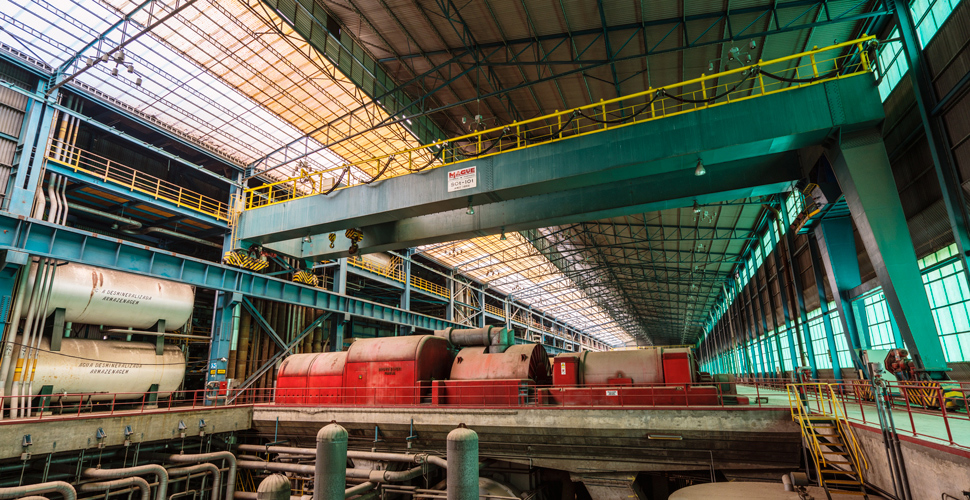
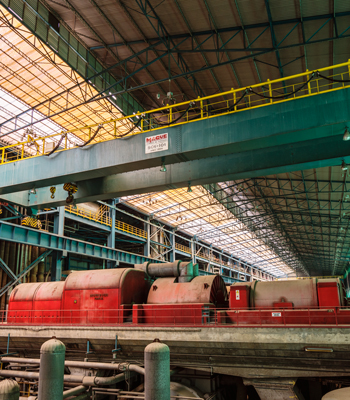
Descending the stairs lined with spider webs, we approach the command rooms. "This was the place! This was all done manually, burner-to-burner, everything was set here, all analog, " Xavier exclaims. He is talking about the large console with commands and buttons, reminiscent of science fiction movies from the 1980s: switches, rotary knobs, commutators. And behind it, a series of panels that were once lit in coloured lights, providing information about the machinery's operation.
The adjustments were mechanical and manual, made by teams with several dozen men. "It was all in Portuguese," Xavier recalls, laughing. "Now it's all in English". Thermometers are the only thing still working: they show 25 degrees Celsius. Each room had 10-person shifts to command two electrical production groups, in a total of 6. Today, one person per room is enough.
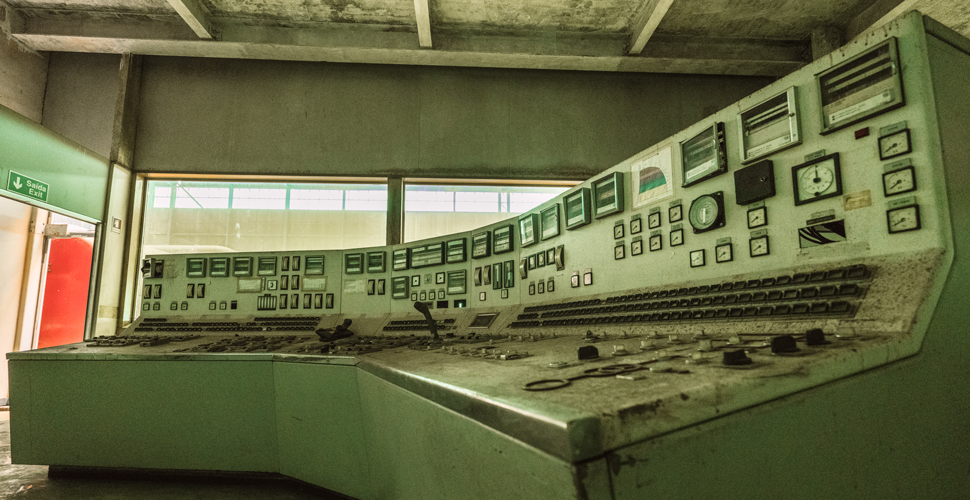
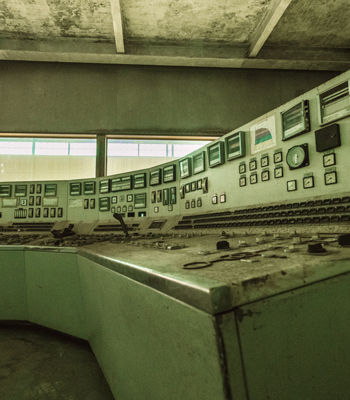
The noise in the control room was deafening - with the turbine blades rotating at 3,000 revolutions per minute, the floor shook - and it was mandatory to wear hearing protection. The communication inside was done through an internal system of speakers. If someone eard his or her name on the speakers, already knew it as necessary to rush into one of the “phone booths” to call the command center room or reception.
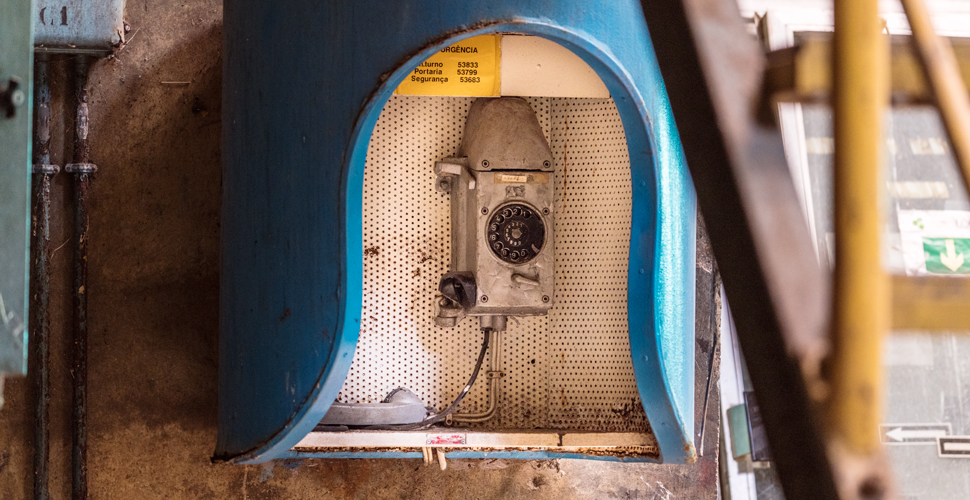
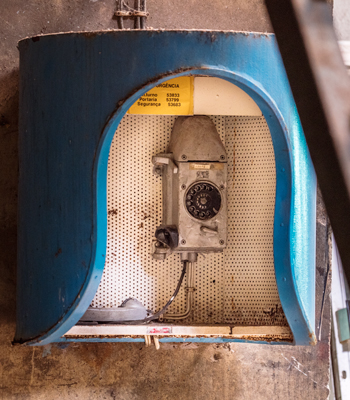
As we head towards the workshop, adjacent to the zone of electricity production groups and control rooms, we find warnings on the wall: “INTENSE NOISE. USE AURICULAR PROTECTION." "We used to pass through here every day to get coffee!" - the voice belongs to Emília Rato, a former administrative technician, who was part of the small group of women who worked at the Power Plant.
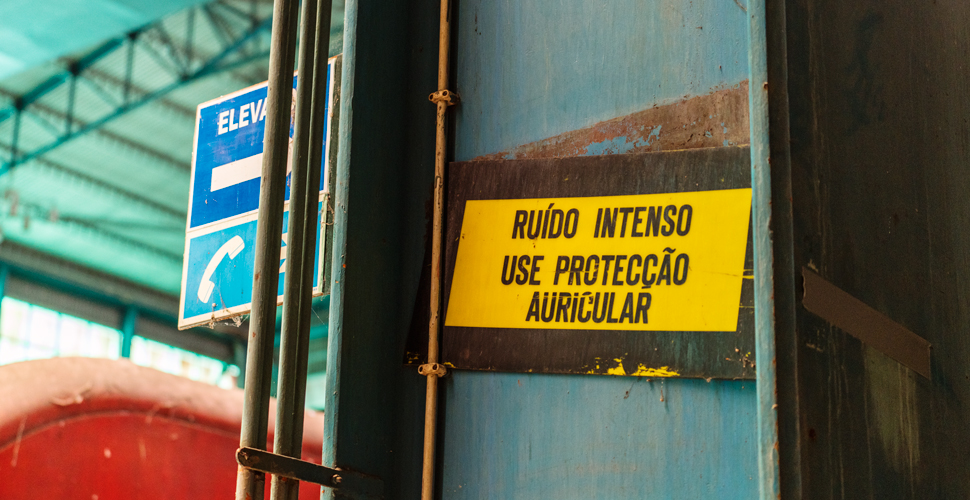

A woman in a world of men
Emília Rato, now Superior Technician at EDP Produção's Human Resources Department, in Lisbon, was in Carregado between 1997 and 2006. Now, back at her old workplace, she recalls some of the adventures of a time when "family" and "team spirit" were strong terms that still remain in her memory.

"I worked in this team with 7 men and I was the only woman! I was a little timid, you know? But they quickly made me feel relaxed because they were spectacular people and I got on very well with the team. They helped me a lot. I was very well-received, no doubt. "
They felt like women "in a world of men." Emília and her colleagues were no more than a dozen, in a power station with about 300 male workers. The women, she laughs, "were like curios! Okay, they were a bit like curios... but they were friendly with us, they were nice, and always very respectful."
Emília remembers the lively and familiar environment that existed at the time - the "human warmth", as she calls it, associated with the great heat that was felt inside the power station, by the boilers for steam production. Just as today, in the new Power Plant built right next door (Central do Ribatejo), the water vapors that moved the Carregado turbines reached temperatures above 500º. It was these turbines that powered the shaft which in turn moved generators at high velocity that produced electric energy.
From fuel oil to natural gas
The Carregado Power Station operated on a fuel oil basis - each of the six production groups burned about 28 t/h of fuel oil at nominal load (125 MW), 24 hours a day. The change to a more environmentally friendly alternative happened in 1997: this was the first Portuguese Power Station to make the transition to natural gas, reconverting two groups to allow for the burning of this fuel.
Natural gas is also the fuel that feeds the "new" Ribatejo Power Station, which curiously (and despite the misleading name), is literally next to the Carregado Power Station. The Ribatejo Power Station entered into service in 2004 and was built there to take advantage of the existing space and local conditions: on one hand, the large area available and the presence of water (Tagus river), which is essential for the operation of the machinery; on the other hand, the point of connection to the national electric network that already existed there and is the "gateway" through which the electric energy enters the distribution network that arrives at our homes.
The news of the decommissioning of the Carregado Power Station was received by the workers with natural dismay. «And now what do I do? Where do I go? What is going to happen to me?” Were the doubts that struck Xavier Teixeira and his colleagues at the time. Some went to the Sines Thermoelectric Plant, others went into pre-retirement, others headed in new directions. Xavier, who was "still young," was able to continue his professional activity at the Ribatejo Power Station - "At the time, engineer Orlando [Carvalho] was Director of the Plant and he invited me, so I had the opportunity to go there," he states.
"Taking down" a power plant: the process of deactivation
Forty years after operating as the main source of electricity in the region (and one of the main ones in the country), the Carregado Power Station has been surpassed technologically and environmentally. It became clear that its operation was no longer the most efficient way to meet the country's electricity consumption. EDP proposed its deactivation to the competent authorities and, after approval, it was the beginning of the end. The Power Plant ceased activity in 2012 and the decommissioning work began.
The deactivation unfolds in phases, as explained by Bruno Travassos, Sub-Director for Thermal Works and Decommissioning in EDP Produção's Directorate of Optimization and Maintenance of Thermal Assets. "Deactivation usually happens in three phases. First, the decommissioning, which, basically, consists of removing all the chemicals, oils and fuel from the plant. In other words, stop the equipment and leave the plant clean, without any risk to the environment," he explains.
The second phase, Bruno Travassos explains, is "Dismantling and Demolition. The Dismantling consists in dismantling the installed equipment and the Demolition, as the name implies, in demolishing the buildings that made up the Power Plant."
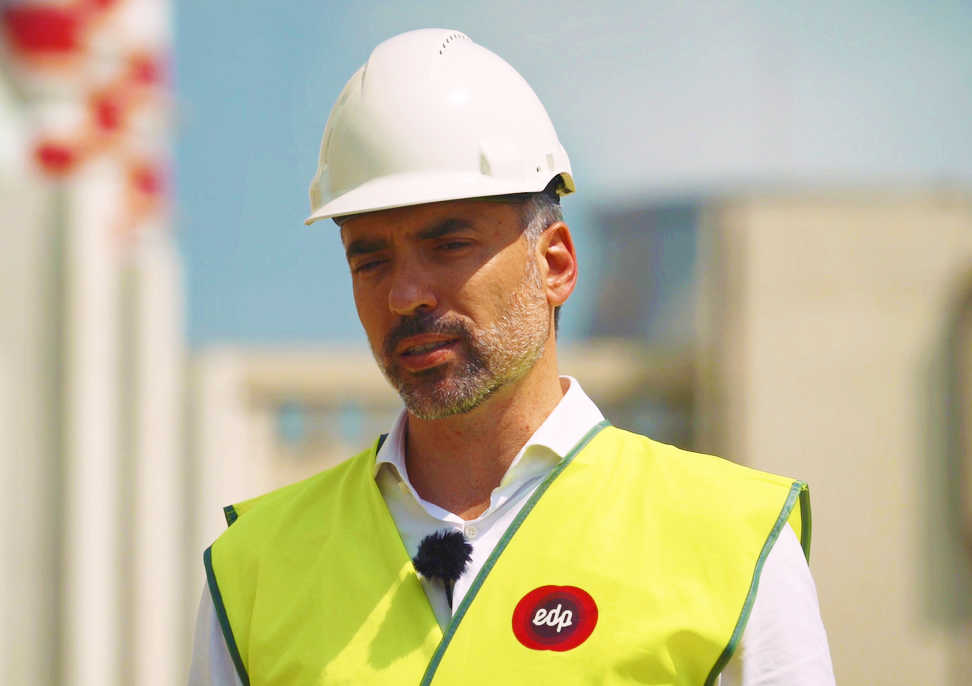
"Lastly, after having the whole plant demolished and dismantled, we do the Environmental Re-qualification of the land. It always depends on what you want to do with the land, but the goal is to leave it in an environmentally satisfactory way and that is our obligation."
Ideally, the process of deactivation is always conducted with the help of people who worked at the power plant. This is because some years elapse between the moment the machines stop and the beginning of the deactivation process. «After 4, 5, 6 years with the Power Plant being out of business, there are no longer any documents or the necessary information and it is good to have the experience of those who worked here," Bruno Travassos confesses," they help the people who come to do the dismantling and decommissioning activities, it helps them to plan the whole process properly. In this sense it is useful to count on the people who worked here and who know the Power Plant better than anyone else."
In the case of Carregado, the decommissioning operations were carried out by outsiders, specialists in these activities, and by EDP collaborators who followed the process: "they are people who know about the Power Plants, who know all the "nooks and crannies" and help with the planning and also in the following construction phase. We have colleagues here who accompanied the work from beginning to end, because they have all this knowledge."
Phases of deactivation


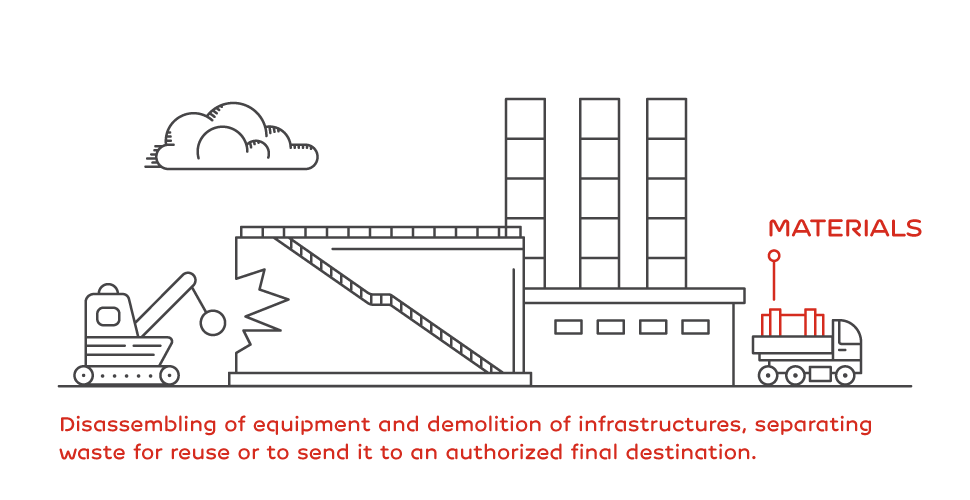
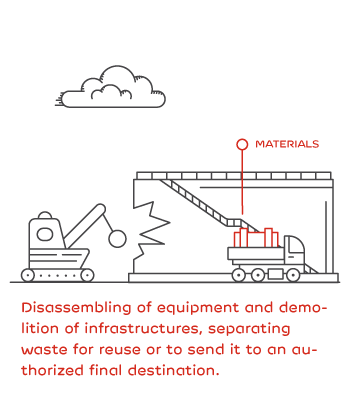
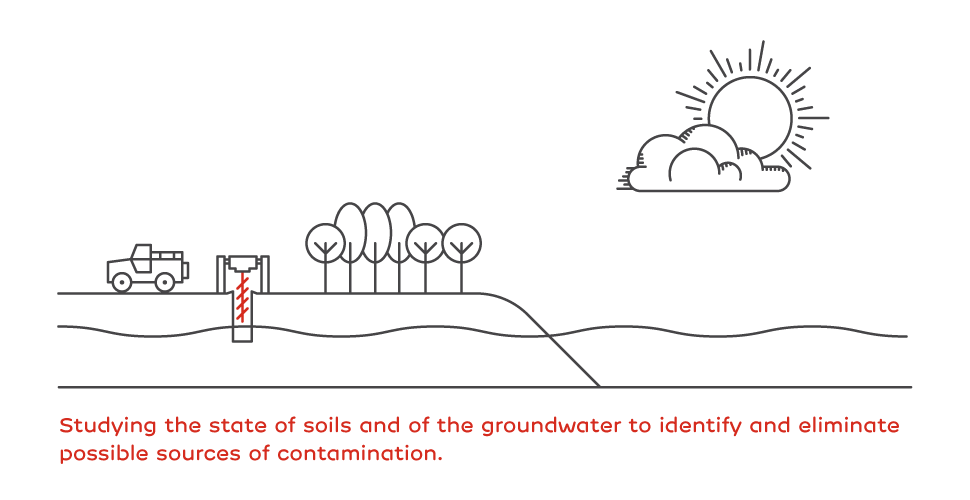
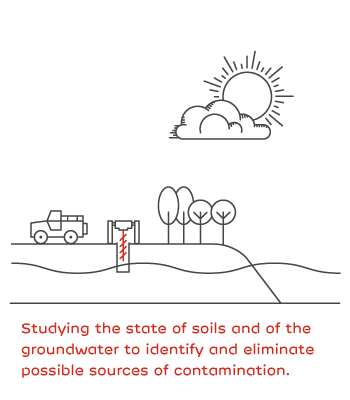
Safety and environment first
The Carregado Power Station has been decommissioned and the Dismantling and Demolition phases are being prepared. Being an old Power Plant, it used some materials that today are banned, as for example asbestos. For that reason it is necessary to safely remove these materials so that there are the right conditions to demolish the Power Station.
Asbestos was a widely used substance at the end of the last century, namely in the isolation of materials subjected to high temperatures. At the Power Plant, it was used to coat steam pipes to avoid human contact with extremely hot surfaces. Asbestos used in these conditions posed no risk - the danger lies in its removal. "What is dangerous is the removal of materials that have asbestos microfibers, because when you start to remove them, they begin to break down into fibers that can be inhaled," Bruno Travassos explains.
As such, the abestos removal phase requires the presence of teams specialized and certified to work with asbestos. It is necessary to protect the areas where the removal takes place, namely through large, sealed plastic bubbles, where negative pressure is maintained - thus ensuring that there are no leakages to the outside. Any worker dealing with asbestos must be properly equipped with a full face mask and spectacles so as not to run the risk of breathing dangerous fibers.
"EDP always has a very strong safety concern. All the contractors we hire are chosen with the guarantee that they also share this concern and certification, to avoid accidents as much as possible."
Bruno Travassos also highlights the emotional side of these operations - in 2002, he participated in the commissioning at the Setúbal Power Plant, and now he is in a decommissioning phase at Carregado. In Carregado, he attended and participated in operations to improve the operation of the Power Plant and is now responsible for its dismantling. From ashes to ashes, from dust to dust.
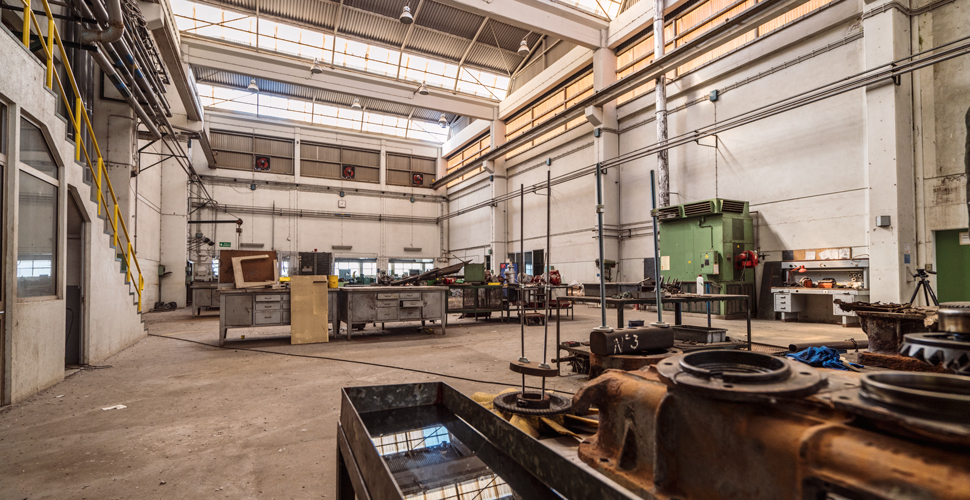
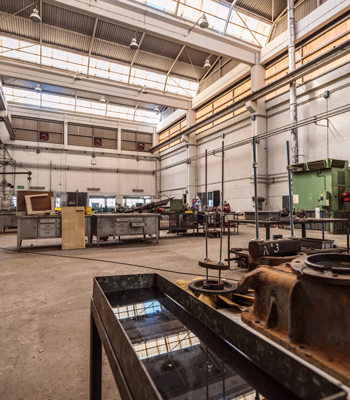
But life goes on in Carregado. In fact, for 15 years, the Ribatejo Power Station has guaranteed jobs to workers like Xavier Teixeira, who had to embrace a new challenge: to adapt to technological advances. "In mechanical terms there are some differences, technologically things are much more advanced than they were here in this power plant," he says. "It was a very interesting challenge for me."
Life in the "new" Power Plant
The Ribatejo Power Plant is a combined cycle natural gas plant. This means that it produces energy through two thermal cycles: one of gas and another one of steam. The gases from the gas turbines are used in a boiler that generates steam and, in turn, feeds new steam turbines.
This Power Plant has only three production groups (unlike the 6 groups in the Carregado Power Station), but it is much more efficient, with yield rates at approximately 50%, against the 35% of the old Power Station. Each group produces 400MW (240MW gas and 160MW steam) and is controlled in a single control room by a digital console.
The difference in size between the facilities of both plants is notorious. From three command rooms where dozens of people worked, we moved to a single control room that could work with only one person. This room is occupied 24 hours a day, 356 days a year, usually by two technicians and a shift chief. Instead of the big consoles and analog switches, we now find computer screens with charts and tables, updated virtually in real-time.
Also, Xavier Teixeira's workshop had its size reduced by half. In the Maintenance area there were over 100 people working; now there are only 10. The introduction of automation and digital systems contributed to the significant reduction of the number of people in the plant, something that Xavier recalls with some sadness.
"We shared some jokes, we all got together at least once a year and we went to a restaurant where we had a joint party, we had lunch, we said good and bad things... we drank one more glass... actually those were the best moments I spent here, spending time with the people who worked at the Power Plant."
But the reduction of personnel is compensated by the great improvement in environmental and working conditions. "In the new boilers, anyone who enters, comes out of there clean. Now, in one of the old ones, try going in there to see what happens! "Xavier jokes" When we blew our noses, it came out black!"
The big, large and low refrigeration chimneys, which now dominate the power plant's landscape, release only water vapor. In addition, much of the water is reused, and, if there were no losses, it would really be a closed-circuit. How? The water in liquid form is heated and turned into steam to move the turbines. The steam cools down as it is used in electrical production, and when it reaches its lowest temperature, it goes through a condensation system that turns it back into water in its liquid state, returning it to the beginning of the process.
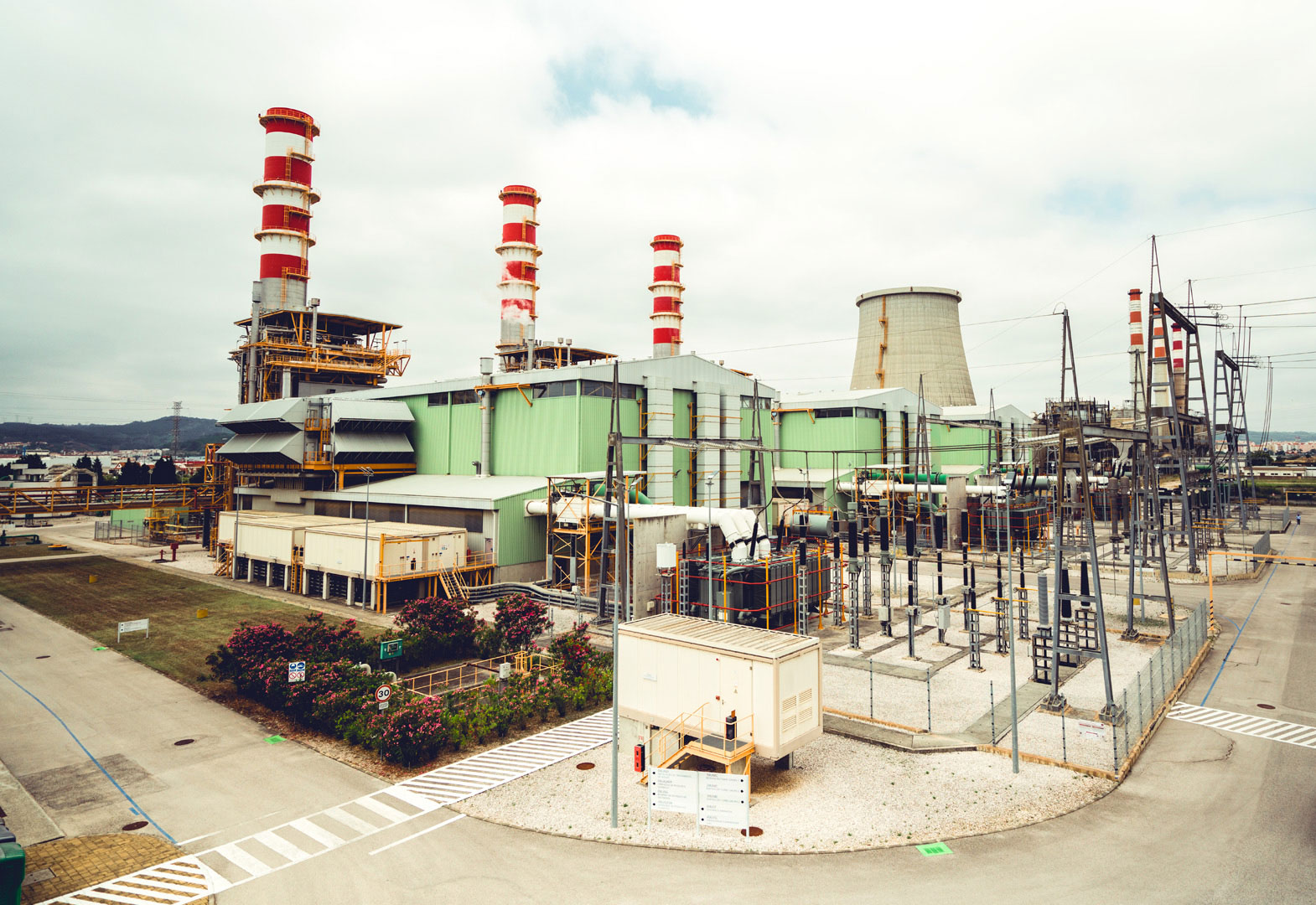

Carregado: a landmark in the History of Portugal
The Carregado thermal plant, in operation since 1968, reached the end of its life cycle in 2010. With its 6 units of fuel, of 125MW each, the Power Plant was an innovation at the time and contributed a lot to the economic development of the region, in terms of creating jobs, having even been awarded the Municipality Medal of Merit of Alenquer, in 2011.
The Municipal Council of Alenquer highlights the "relevant contribution to security and guarantee of the electricity supply necessary to the National Electric Grid, especially in periods of greater energy shortage, in which its action became preponderant." It also points out the importance of the jobs created (more than 400 over 40 years) and the contribution that this Power Plant gave to the introduction of Natural Gas in Portugal.
Now in the process of deactivation, the power plant is still a landmark in the history of this municipality and those around it. The three old chimneys will disappear, all the buildings will be demolished, and until there is news to the contrary, all that will remain is a flat, empty terrain, surrounded by an outer net.
The visit of Xavier and Emília to the "phantom power plant" is the return to an old home, where they grew up, where friendships were made and, in some cases, even the love of a lifetime was found. From the work in the power plant, they mainly remember the relations with their colleagues. «Exactly, the friendships. The work seduced and the work was done, but it was the union that existed here. Everyone knew each other's family, the son and the daughter, if one was ill, someone went and helped, in fact, there was a lot of human warmth here," Emília recalls.
The complete deactivation of the Carregado Power Plant is planned to be concluded in 2020 or 2021. Until then, we can pass on the A1 and contemplate the 6 striped chimneys (three old and three new) that mark an era and, above all, mark the passage of time. In 30 years, technology has skyrocketed and environmental concerns gave new priorities to EDP and the world. This place is a living testimony that shows the passage of time, the evolution of a community and the progress of a country.